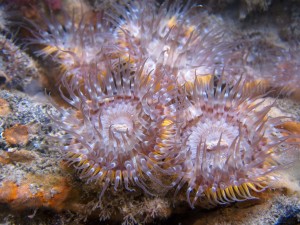Camels Often Sit Down Carefully Perhaps Their Joints Creak; a mnemonic. In this instance one  designed to help students of geology remember Geological Periods; Cambrian, Ordovician, Silurian, Devonian, Carboniferous, Permian, Triassic, Jurassic, Cretaceous. Geological Periods are divisions of geological time during which the earth record tells us that something very different was happening to that which went before and to that which came after.
designed to help students of geology remember Geological Periods; Cambrian, Ordovician, Silurian, Devonian, Carboniferous, Permian, Triassic, Jurassic, Cretaceous. Geological Periods are divisions of geological time during which the earth record tells us that something very different was happening to that which went before and to that which came after.
Each of the geological periods is, through convention, generally assigned a particular colour on geology maps. A geology map of Ireland shows a remarkable range of colours demonstrating that the rocks that make up the physical skeleton of our island span a wide range of geological periods. But there is one standout colour – blue (and the olive green in the mid and south west on the map presented here). In Ireland blue, and the olive green, represents rocks that belong to the Carboniferous period which spanned the time period roughly 350 to 290 million years ago. It is hard to overstate how important the Carboniferous Period is and has been to Ireland. Most of our important groundwater resources reside in Carboniferous limestone aquifers. Some of our most spectacular landscapes are expressed through Carboniferous rocks – the Burren, the uplands and caves of south Fermanagh, for example. Most of our most important mineral resources are hosted in Carboniferous rocks; Tynagh, Navan, Silvermines.
During the Carboniferous Period in Ireland a warm ocean flooded Ireland from the south east leaving the north west above water. In the first stage of this ocean corals grew and eventually became the clean limestones we know from much of Ireland but as this ocean shallowed the corals were replaced by sandstones and shales that overlay the coral. As the ocean shallowed still further swamp forest grew, died, decayed and gradually became compressed into coal beds. Unfortunately shortly after these coals were formed the land rose and they were removed by erosion except for a few places such as Arigna in Leitrim and Castlecomer in Kilkenny.
The northern half of Clare is underlain by clean limestones that allow rapid drainage through swallow holes and directly into the rock and the formation of caves. In contrast, the southern half of Clare, including Kilkee and its surrounds, is underlain by sandstones and shales. Robert Lloyd Praeger in The Way that I Went wrote of this part of Clare that ‘the cliffs, on account of the rapid weathering of shales are almost plantless, black and forbidding’ From the sea Brian Wilson in Dances with Waves, the story of the first circumnavigation of Ireland by kayak in 1990, writes with equal awe when quoting Richard Lovett from 1880 that Kilkee’s bay is ‘…as ugly a ledge of rock as the most fastidious taste in that class of scenery could desire.’ Wilson, approaching Kilkee as the ‘..surf smashed manically on Lovett’s ugly ledge…’ eventually ‘…made one of the most homely and hospitable landfalls in the whole of County Clare.’
Kilkee (52.682835,-9.647055) is a magnet for divers from all over Ireland and it is easy to see why with its combination of dramatic under and over water scenery and the mix of accessible shore and boat dives. There are a range of shore dives all of which are described in Underwater Ireland – Guide to Irish Dive Sites (Vols. 1 and 2) and two recent articles in Subseahere and here.
Doctors Rock on the southern shore of the bay that forms the centrepiece of Kilkee is one of the many shore dives. The start of the dive is via a narrow gap to the sea beyond which circumnavigation of rocky islets in depths up to about 15 metres is rewarded with some of the densest colonies of anemones and hydroids that I have encountered in a long time.

Heading for the Gap
Oaten Pipe Hydroid

The afters were equally good. Gooseberry cake, blueberry muffins coffee and very nice company. Thanks to all in Kilkee for making the shore dive for Suzanne and I so memorable.
Coffee and Cakes
(Sinead, Martin, Suzanne, Aude, Mike and Brian – L to R)
(For anyone interested in the history of geology mapping in Ireland Gordon Herries Davies’ Sheets of Many Colours published by the Royal Dublin Society in 1983 is a must read).
